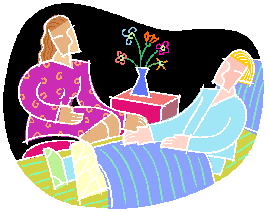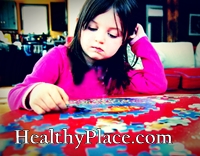Have You Written a Love Letter Lately?
Michael J. Montegut, Ph.D., Guest Author
'A LETTER from my love to-day!
Oh, unexpected, dear appeal!'
She struck a happy tear away,
And broke the crimson seal.
John Davidson. 1857 - 1909
 Communication is a word we hear often when people talk about improving relationships. We receive voluminous communication from every corner of our lives and from a myriad of sources: e-mail, radio, postal mail, telephone, pagers, FAX, television, cell phones and more every year. A lot of people I speak with think they cant escape contact with those around them. They feel that they do a pretty good job of interacting with others, especially when they have all the fancy, high-tech communication tools.
Communication is a word we hear often when people talk about improving relationships. We receive voluminous communication from every corner of our lives and from a myriad of sources: e-mail, radio, postal mail, telephone, pagers, FAX, television, cell phones and more every year. A lot of people I speak with think they cant escape contact with those around them. They feel that they do a pretty good job of interacting with others, especially when they have all the fancy, high-tech communication tools.
But in relationships it is the quality of the communication that makes the most difference, not necessarily the quantity or speed of delivery. If you say the same thing, in the same way, over and over every day, your loved ones can become inured to it.
This is especially true with the daily I Love You that is the staple of most loving, committed relationships. Just because you say it, does not mean that the message was received or perceived as sincere. Sincerity is always at risk with quick and easy forms of communication. It is easy to get into the habit of saying those three words with such ease that it is automatic.
One of the most powerful and sincerest forms of communication that we see very little of today is letter writing. I am not talking about e-mail or post-its. I mean a real letter that is written on real paper and dropped in the non-virtual mailbox down the street. Letters take time and thoughtfulness to create.
But what about the more efficient forms of communication in this technologically advanced age?
E-mail is easily written and often curt. Since e-mail is meant to allow quick and easy communication we often send messages without careful consideration. Furthermore, when e-mail is received the reader does not pause for a deep look because of the dozen other e-mail they received at the same time.
And forget those cutsie e-cards. They serve a purpose. They let someone know you are thinking about them and many times they may make them laugh (which is a good thing.) But in general, e-cards are not an effective delivery system for deep communication. As with paper greeting cards, the message in the e-card is filled out for you most of the time.
And the phone? Why not that most ubiquitous of 21st century communication tools, the cell phone?
When you make a phone call you and the person you are talking to can both be doing a handful of other things at the same time, and as a result this form of verbal communication can be poorly thought out and impulsive. Ultimately the phone, especially the cell phone, is meant to be used as a device of convenience. And deep, intimate, carefully considered and sincere communication does not have convenience as the main objective.
Greeting cards do not count (unless the sender has enclosed a substantial personal note which is rare). The greeting card industry has capitalized quite successfully on our inability to write from our own hearts, either due to lack of time or a perceived lack of creativity.
There are thousands of cards for every imaginable occasion with a heartfelt message already written out for us. All we have to do is sign our name (Even this is falling out of vogue in some circles - I have been given cards by people who do not sign their names so that the receiver can recycle the card and use it on someone else Yikes!!) Why is it that we need to buy our heartfelt sentiments in sterile, prepackaged form?
A letter, even a short one, can be symbolic of dedication. It shows commitment because it takes a little more time and care to organize ones thoughts and put them on paper. In addition, the written word is permanent and physical, two things that are a big part of committed relationships. It is a lot harder to deny what we have written than it is to deny what weve said.
For instance, if you say you are sorry to someone verbally you can equivocate and feel the person out so that you can alter your message depending on how you think things are going. Most people see through duplicity and equivocation in written form immediately. A letter forces you to state your feelings with permanence and, if you are practiced and take your time, clarity.
When was the last time you received a letter that was either written or typed out by hand? I am willing to bet that this is an exceedingly uncommon occurrence for most of you.
Please write again soon. Though my own life is filled with activity, letters encourage momentary escape into others lives and I come back to my own with greater contentment.
Elizabeth Forsythe Hailey
The writing of a letter also provides the opportunity to surprise someone. Place it in a location where they will find it at an unusual moment. For example, as they are riding the train to work or about to eat their lunch. Any place where they will discover it and take pause is good.
This is also much more romantic than just handing someone note or sending them an e-mail. In fact, if you are in a long distance relationship and normally correspond by e-mail every day, it will be a big and welcome surprise for your partner to get some real mail.
People often tell me that they do not feel they have any facility with writing and so cannot produce a letter, even a short one. A lot of people simply do not know what to say to their loved ones in a letter. If you think about it, you just have to say how you feel and what you are thinking. No one is completely devoid of feelings and no one has a blank mind (ever).
Sometimes people are overwhelmed with many feelings and thoughts. If you find that this is your situation, make a list of the top 3 feelings and thoughts that are swirling around in your head. Then pick one and address it.
 For instance, your top three thoughts or feelings related to your partner might be:
For instance, your top three thoughts or feelings related to your partner might be:
1. You forgot to kiss me goodbye this morning.
2. Do you really like that couch we ordered or are you just going along?
3. I really need some time alone with you. . . without the kids.
Even if you say what you feel in plain, simple, language (and this can be the best way most times) this is more than enough to make the point that you care. And the more you write the easier it will be and you will become more proficient at communicating your true feelings to others.
There is one caveat. Do not use writing as a way of avoiding confrontation or inflicting pain. The "Dear John" letter is a prime example. Remember that just as the written word has the power to spread love, it can also do damage to a relationship.
Choose your words wisely and never send a letter written in anger or use the written word as an alternative for something that should clearly be done face-to-face.
I write entirely to find out what I'm thinking, what I'm looking at, what I see and what it means. What I want and what I fear.
Joan Didion
Many therapists and coaches see writing as a powerful form of therapy. Getting everything down on paper clears your head of tumultuous thoughts and emotion. It helps to calm most people. There is even a sense of accomplishment when you have successfully described your feelings or concerns and can see them on paper. This is why journal writing is prescribed by so many therapists.
You can even write letters to communicate deep feelings that you may not be able to speak of effectively in person at the appropriate time (either because you are unavailable or because you do not remember the exact feeling you had at the time.)
Here is a great idea that I got from a book by Mark and Dianne Button called, "The Letter Box: A Story of Enduring Love." The authors suggest that you write letters to your loved ones at important times in their lives and keep the letters tucked away in a small box for your loved ones to open at a later date.
For instance, you can write a letter to your child on the day of his birth describing all the joy you are experiencing and what it is like to hold him for the first time. You give this to him when he are 30 years old or perhaps on the occasion of the birth or his first child. Now that's something you can't do with an e-mail!
Take the time to try this. Commit right now to write your partner or a loved one a personal note expressing your positive feelings toward them. Do it on paper. If a letter is too daunting, then write a couple sentences. If that is too scary, then try just a few words.
Just say what you feel, no matter how simple or silly (this is often best). Have faith that it will make their day. Put your letter to them where they will find it unexpectedly or mail it though the regular mail.
I can guarantee that you will receive a positive response from them. And your letter can keep giving. Because, unlike words that are spoken (and then only a memory), a letter can be reread and experienced over and over.
By taking the time to express your love in a permanent and clear form, you will are recommitting to your loved one and to the vitality of your relationship with them.
Copyright © - Michael J. Montegut, Ph.D.. All rights reserved. Reprinted with Permission.
APA Reference
Staff, H.
(2008, December 20). Have You Written a Love Letter Lately?, HealthyPlace. Retrieved
on 2025, December 5 from https://www.healthyplace.com/relationships/celebrate-love/have-you-written-a-love-letter-lately
 For over 50 years, Al-Anon (which includes Alateen for younger members) has been offering hope and help to families and friends of alcoholics. It is estimated that each alcoholic affects the lives of at least four other people - alcoholism is truly a family disease. No matter what relationship you have with an alcoholic, whether they are still drinking or not, all who have been affected by someone else's drinking can find solutions that lead to serenity in the Al-Anon / Alateen fellowship. There are no dues or fees.
For over 50 years, Al-Anon (which includes Alateen for younger members) has been offering hope and help to families and friends of alcoholics. It is estimated that each alcoholic affects the lives of at least four other people - alcoholism is truly a family disease. No matter what relationship you have with an alcoholic, whether they are still drinking or not, all who have been affected by someone else's drinking can find solutions that lead to serenity in the Al-Anon / Alateen fellowship. There are no dues or fees. Supportive-expressive psychotherapy proves effective in treating hard drug users by helping them maintain gains made in addiction treatment.
Supportive-expressive psychotherapy proves effective in treating hard drug users by helping them maintain gains made in addiction treatment.
 Note to editor: all references which are now in parentheses, in the form of a name and a data, should be numbered as footnotes and placed at the end of the book with the other footnotes, chapter by chapter. The references might best be grouped as a bibliography-reading list, with the footnotes referring to them by name and date.
Note to editor: all references which are now in parentheses, in the form of a name and a data, should be numbered as footnotes and placed at the end of the book with the other footnotes, chapter by chapter. The references might best be grouped as a bibliography-reading list, with the footnotes referring to them by name and date. Dear Diane:
Dear Diane:
 And administrators fear the rise of attrition rates due to Internet misuse on campus.
And administrators fear the rise of attrition rates due to Internet misuse on campus.
 Providing specific and structured activities which are to be shared with one or two selected classmate(s). These might range from some jobs to be completed in the school during break or lunch time, games involving turn-taking (board games based on logic or spatial intelligence such as Chess rather than games based on inference-making like Cluedo, simple card games ), tasks or mini-projects to be completed on the computer ( e.g. preparing large print labels for work to be displayed around the classroom or having the major responsibility for printing a class newsletter ).
Providing specific and structured activities which are to be shared with one or two selected classmate(s). These might range from some jobs to be completed in the school during break or lunch time, games involving turn-taking (board games based on logic or spatial intelligence such as Chess rather than games based on inference-making like Cluedo, simple card games ), tasks or mini-projects to be completed on the computer ( e.g. preparing large print labels for work to be displayed around the classroom or having the major responsibility for printing a class newsletter ).